1. What is a BSDL File?
-
The maximum TCK frequency supported by the current chip
-
Definitions of pin names and numbers
-
Definitions of power, clock, configuration, I/O pins, etc. The type of each pin, such as VCC, GND, CLK, along with the pin names and numbers
-
All available command registers
-
All available data registers, including possible preset values, for example: device IDCODE
2. Obtaining BSDL Files
Method 1: BSDL Library
https://www.bsdl.info/
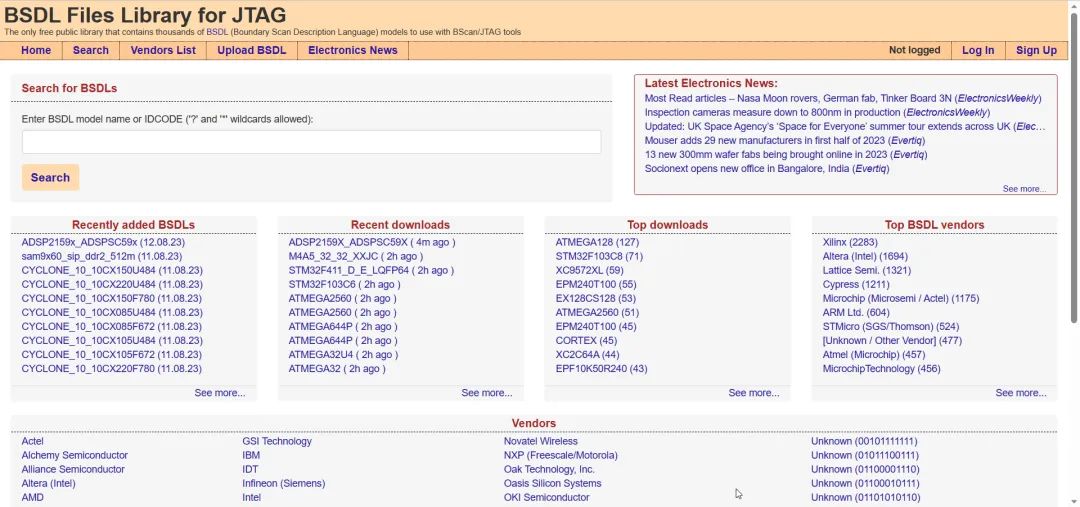
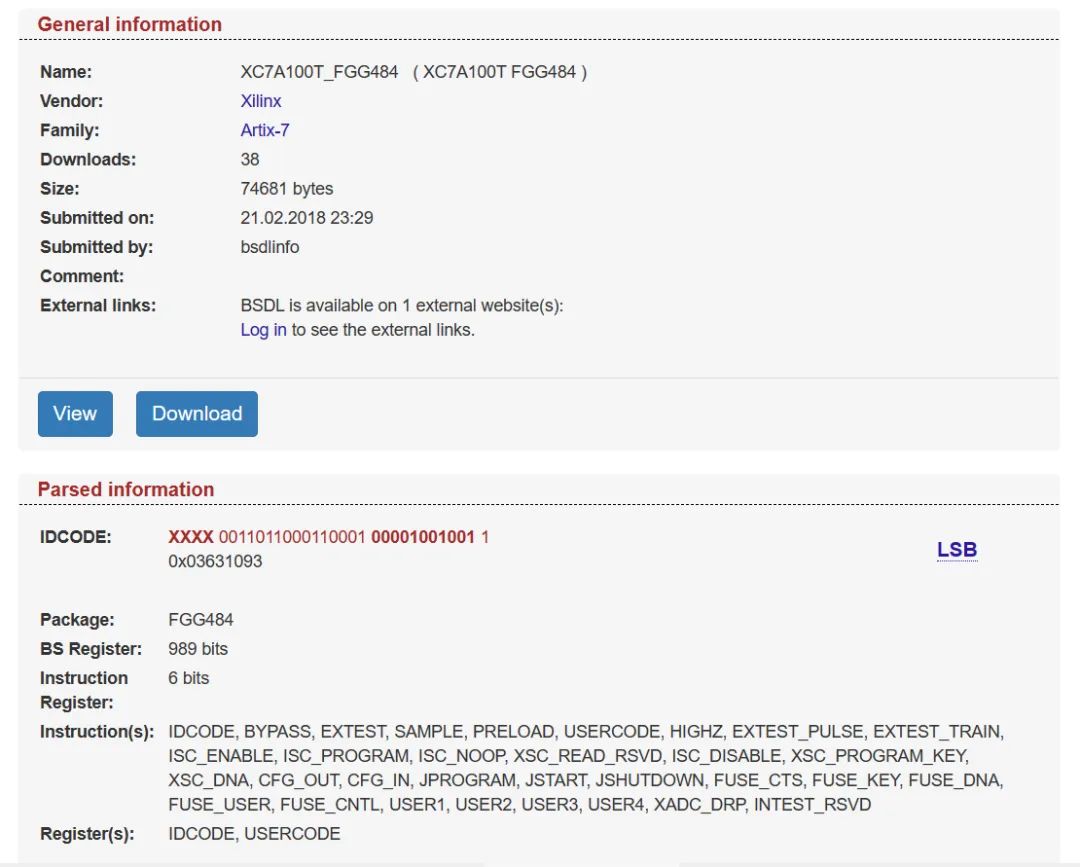
Method 2: Official Websites of Chip Manufacturers
Obtaining Xilinx FPGA BSDL Files
Xilinx\14.7\ISE_DS\ISE\artix7\data
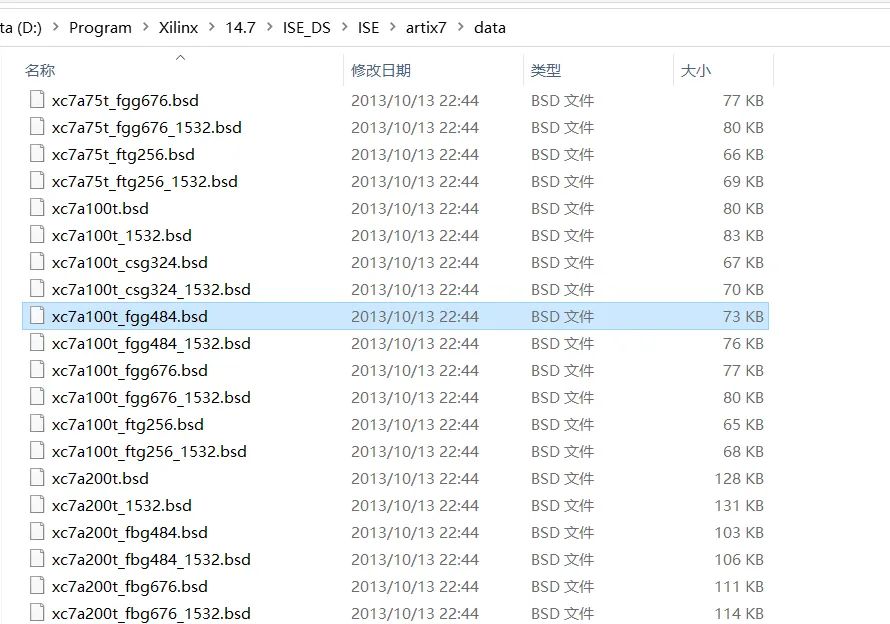
Vivado\Vivado\2018.3\ids_lite\ISE\artix7\data
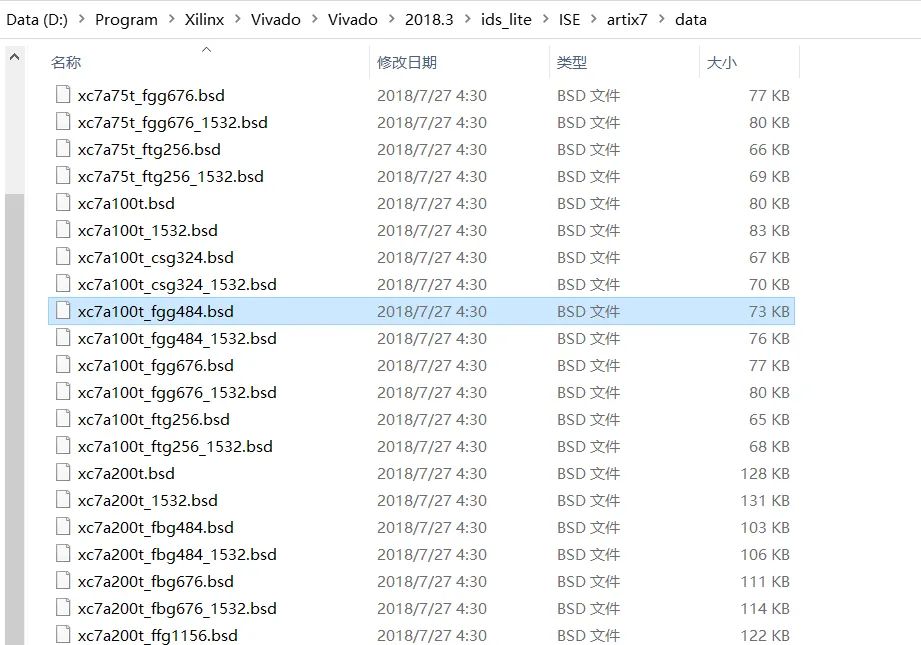
https://www.xilinx.com/support/download/index.html/content/xilinx/en/downloadNav/device-models/bsdl-models/artix-series-fpgas.html
Obtaining Altera FPGA BSDL Files
https://www.intel.cn/content/www/cn/zh/support/programmable/support-resources/board-layout/bsd-11491.html
https://www.intel.cn/content/www/cn/zh/support/programmable/support-resources/board-layout/bsd-11496.html
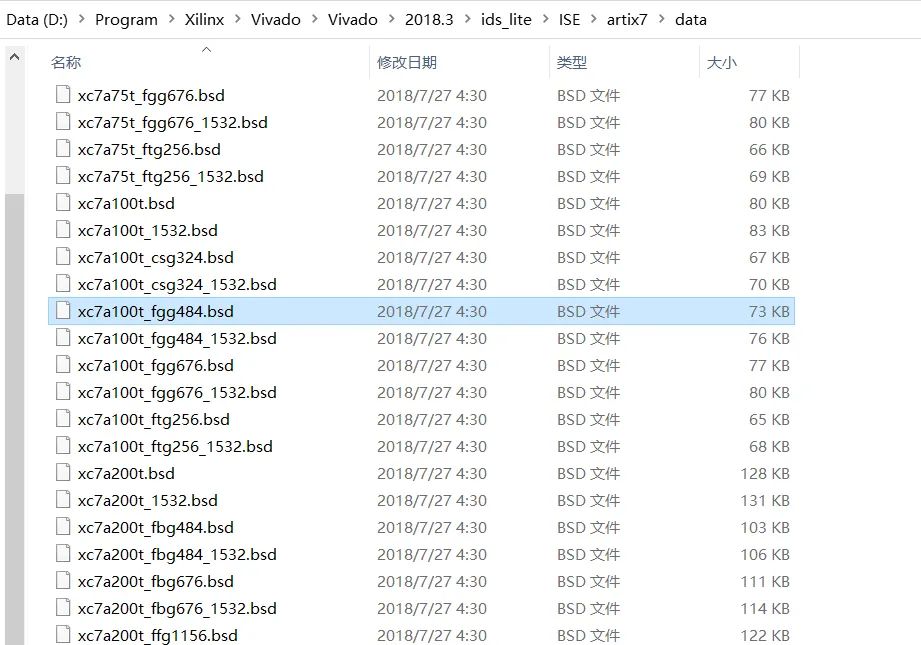
Obtaining Microsemi FPGA BSDL Files
https://www.microsemi.com/product-directory/design-resources/1717-bsdl-models
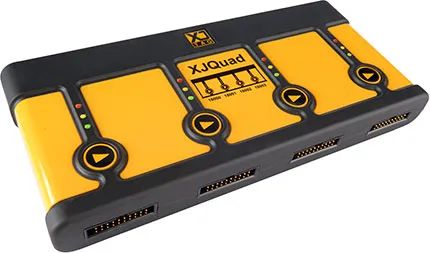
Obtaining ST MCU BSDL Files
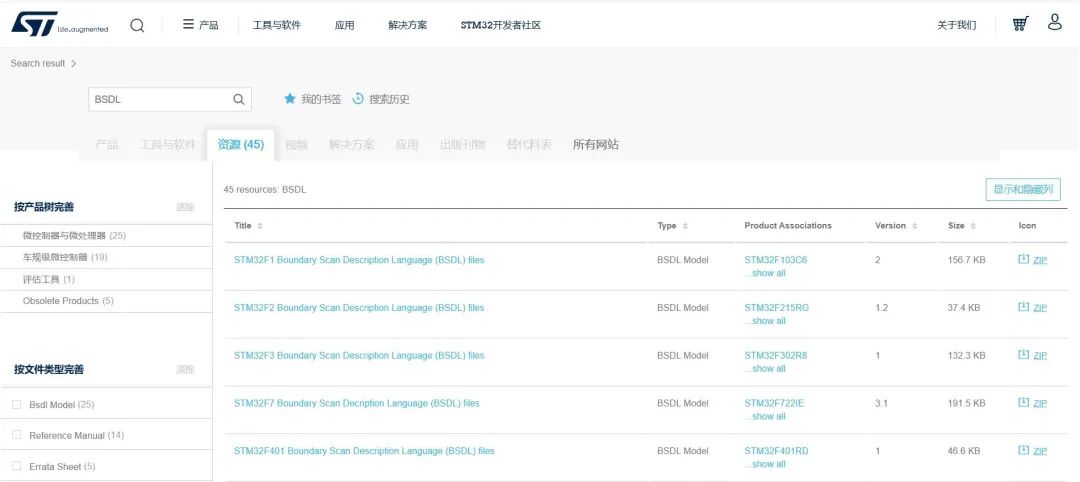
STM32F1:
https://www.st.com/content/ccc/resource/technical/ecad_models_and_symbols/bsdl_model/75/4a/50/d0/ad/aa/49/92/stm32f1_bsdl.zip/files/stm32f1_bsdl.zip/jcr:content/translations/en.stm32f1_bsdl.zip
STM32F2:
https://www.st.com/content/ccc/resource/technical/ecad_models_and_symbols/bsdl_model/e9/d6/86/75/13/99/46/c8/stm32f2_bsdl.zip/files/stm32f2_bsdl.zip/jcr:content/translations/en.stm32f2_bsdl.zip
STM32F17:
https://www.st.com/content/ccc/resource/technical/ecad_models_and_symbols/bsdl_model/ad/a6/69/0f/70/95/49/92/stm32f7_bsdl.zip/files/stm32f7_bsdl.zip/jcr:content/translations/en.stm32f7_bsdl.zip
3. BSDL File Example
--
-- BSDL File created/edited by BCAD BSD Editor Version 3.1
--
--BSDE:Revision: $Header: /devl/xcs/repo/env/Jobs/iMPACT/data/xc9500/xc95144.bsd,v 1.2 2000/10/24 00:58:57 sanjays Exp $
--BSDE:Description: Xilinx 144 macrocell FastFLASH ISP CPLD
entity XC95144 is
generic (PHYSICAL_PIN_MAP : string := "DIE_BOND" );
port (
PB00_00: inout bit;
PB00_01: inout bit;
PB00_02: inout bit;
........
VSSINT_4: linkage bit;
VSSIO_1: linkage bit;
VSSIO_2: linkage bit;
VSSIO_3: linkage bit;
VSSIO_4: linkage bit;
VSSIO_5: linkage bit;
VSSIO_6: linkage bit;
VSSIO_7: linkage bit;
VSSIO_8: linkage bit;
VSSIO_9: linkage bit
);
use STD_1149_1_1990.all;
attribute PIN_MAP of XC95144 : entity is PHYSICAL_PIN_MAP;
constant DIE_BOND: PIN_MAP_STRING:=
"PB00_00:PAD25," &
"PB00_01:PAD18," &
"PB00_02:PAD19," &
"PB00_03:PAD27," &
"PB00_04:PAD21," &
"PB00_05:PAD22," &
"PB00_06:PAD32," &
"PB00_07:PAD23," &
"PB00_08:PAD24," &
"PB00_09:PAD34," &
........
"VSSIO_3:PAD51," &
"VSSIO_4:PAD80," &
"VSSIO_5:PAD99," &
"VSSIO_6:PAD110," &
"VSSIO_7:PAD120," &
"VSSIO_8:PAD137," &
"VSSIO_9:PAD160";
attribute TAP_SCAN_IN of TDI : signal is true;
attribute TAP_SCAN_OUT of TDO : signal is true;
attribute TAP_SCAN_MODE of TMS : signal is true;
attribute TAP_SCAN_CLOCK of TCK : signal is (1.00e+07, BOTH);
attribute INSTRUCTION_LENGTH of XC95144 : entity is 8;
attribute INSTRUCTION_OPCODE of XC95144 : entity is
"BYPASS ( 11111111)," &
"CONLD ( 11110000)," &
"EXTEST ( 00000000)," &
"FERASE ( 11101100)," &
"FBULK ( 11101101)," &
"FPGM ( 11101010)," &
"FPGMI ( 11101011)," &
"FVFY ( 11101110)," &
"FVFYI ( 11101111)," &
"HIGHZ ( 11111100)," &
"IDCODE ( 11111110)," &
"INTEST ( 00000010)," &
"ISCEN ( 11101000)," &
"SAMPLE ( 00000001)," &
"USERCODE ( 11111101)" ;
attribute INSTRUCTION_CAPTURE of XC95144 : entity is "000XXX01";
attribute INSTRUCTION_DISABLE of XC95144 : entity is "HIGHZ";
attribute IDCODE_REGISTER of XC95144 : entity is
"0010" & "1001010100001000" & "00001001001" & "1";
attribute USERCODE_REGISTER of XC95144 : entity is
"XXXXXXXXXXXXXXXXXXXXXXXXXXXXXXXX";
attribute REGISTER_ACCESS of XC95144 : entity is
"BYPASS ( CONLD, HIGHZ )," &
"ISCENABLE[12] ( ISCEN)," &
"ISCONFIGURATION[27] ( FERASE, FBULK, FPGM, FVFY)," &
"ISCDATA[10] ( FPGMI, FVFYI)";
attribute BOUNDARY_CELLS of XC95144 : entity is
" BC_1";
attribute BOUNDARY_LENGTH of XC95144 : entity is 432;
attribute BOUNDARY_REGISTER of XC95144 : entity is
" 0 (BC_1, *, internal, X)," &
" 1 (BC_1, *, internal, X)," &
" 2 (BC_1, *, internal, X)," &
" 3 (BC_1, *, controlr, 0)," &
" 4 (BC_1, PB07_16, output3, X, 3, 0, Z)," &
" 5 (BC_1, PB07_16, input, X)," &
" 6 (BC_1, *, controlr, 0)," &
" 7 (BC_1, PB07_15, output3, X, 6, 0, Z)," &
" 8 (BC_1, PB07_15, input, X)," &
" 9 (BC_1, *, controlr, 0)," &
" 10 (BC_1, PB07_14, output3, X, 9, 0, Z)," &
...省略部分...
end XC95144;
4. Applications of BSDL Files
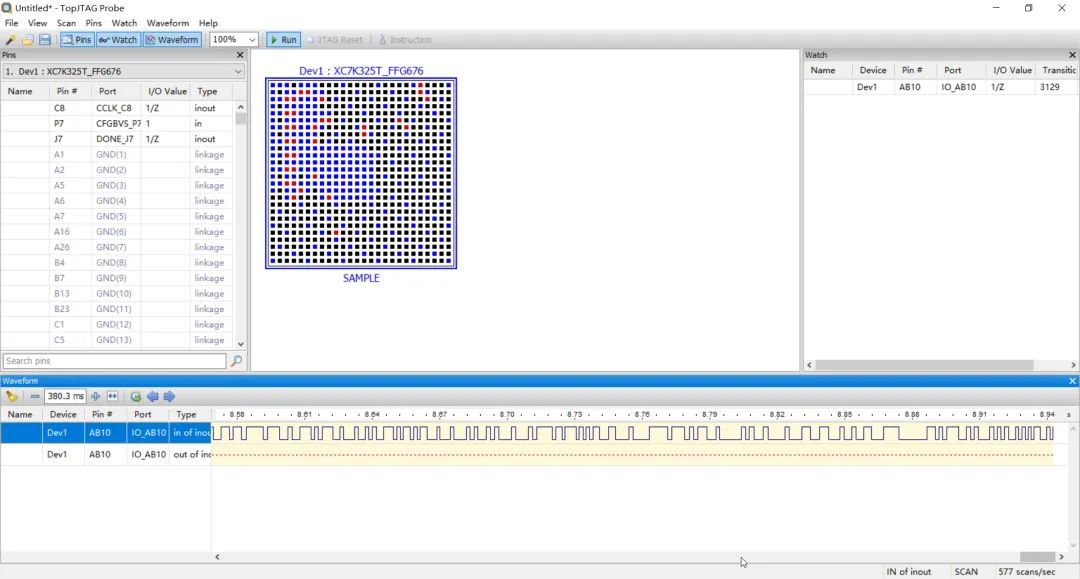
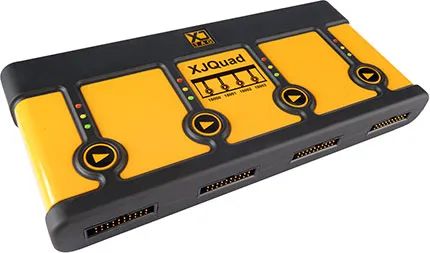
More Selections
-
Powerful JTAG Boundary Scan 1 – Basic Principles
-
China Mobile Wankou Tiangong Development Board Trial Review
-
Downloading Xilinx FPGA Programs with JLink and OpenOCD
-
Four Methods to Obtain Xilinx FPGA Chip IDCODE (Supports Any FPGA Model)
-
What is Amateur Radio?
-
Xilinx FPGA Multiboot Design and Implementation (Spartan-6 and Kintex-7 Example)